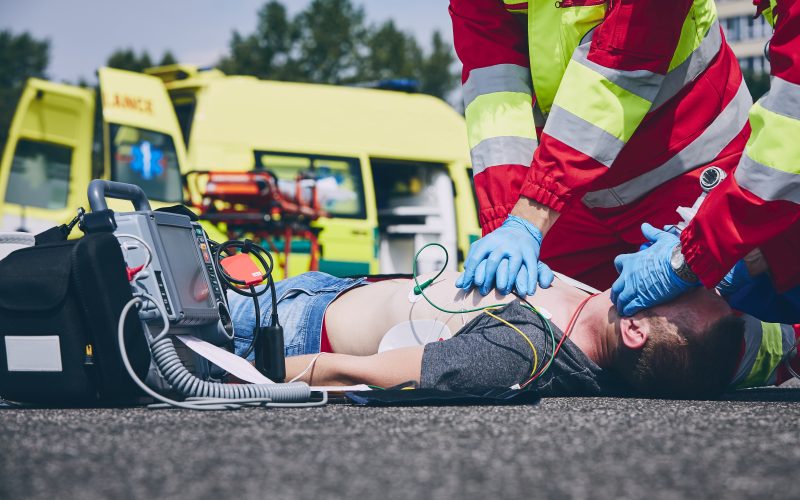The ability to remain aware during cardiac arrest is little understood. Sam Parnia, Director of Critical Care and Resuscitation Research in the Department of Medicine at New York University School of Medicine, joins guest host Courtney Collins to discuss his research into cognitive awareness during resuscitation and why studying it has profound implications for our understanding of the gray area between life and death. His journal article was published in Resuscitation.
The inaccuracy of ‘my life flashed before my eyes’
By Shaunessy Renker, Think Intern
What happens in the moments after someone flatlines is an age-old question philosophers, researchers, doctors, and religious leaders have explored. The idiom, “my life flashed before my eyes,” is famous for a reason. On occasion we see profiles in the news about people who brushed death. They report experiencing flashes of memories and cognitive awareness while undergoing CPR.
Dr. Sam Parnia is an intensive care doctor who treats patients with life-threatening illnesses daily.
“The discovery of CPR actually coincided with the discovery of intensive care medicine as a field,” Dr. Parnia says. “So, for the first time in history over the last 60 or so years, people who would have otherwise never been able to live are living and are able to tell us what they’ve experienced when they’ve actually crossed the boundaries of death.”
Through monitoring brain activity while patients were flatlining, Dr. Parnia discovered the emergence of normal-looking brainwaves even after an hour of ongoing resuscitation efforts. This confirmed the fact that though seemingly unconscious from the doctors’ and nurses’ perspective, patients are indeed conscious.
“We were able to show that the brain essentially hibernates when there’s no blood flowing to it, but it doesn’t permanently die,” Dr. Parnia says. “It remains in a state where it’s not working, but if you can treat it appropriately, you can revive it again.”
Through extensive research, Dr. Sam Parnia found that patients develop a sense of awareness and can actually gather information from around themselves during their last moments. They have a sense of visualizing things almost in 360 degrees. The saying, “my life flashed before my eyes” is an understatement and does not accurately describe the experience. Those who have brushed death describe not only reliving every interaction they’ve had with others but also from the perspectives of the people they were interacting with. During this hyperlucid experience of death, they describe being able to recall all of their intentions, thoughts, and every single emotional state they’ve been in. They do not simply experience random flashes of memories, but instead evaluate the interactions they’ve had with various people through a moral and ethical lens, independent of their belief structures beforehand.
“What is it about death that enables people to get access to everything as if it’s been recorded in them?” Dr. Parnia says. “Death is bringing out access to these new dimensions of reality including our entire consciousness. And we have to ask ourselves, what is the purpose of this? Why is it that we evaluate everything from the perspective or morality and ethics when we are at death? Why does that become the predominate way that we think when we’re in this limbo state between life and death? And what does it prepare us for as we are transitioning away?”

